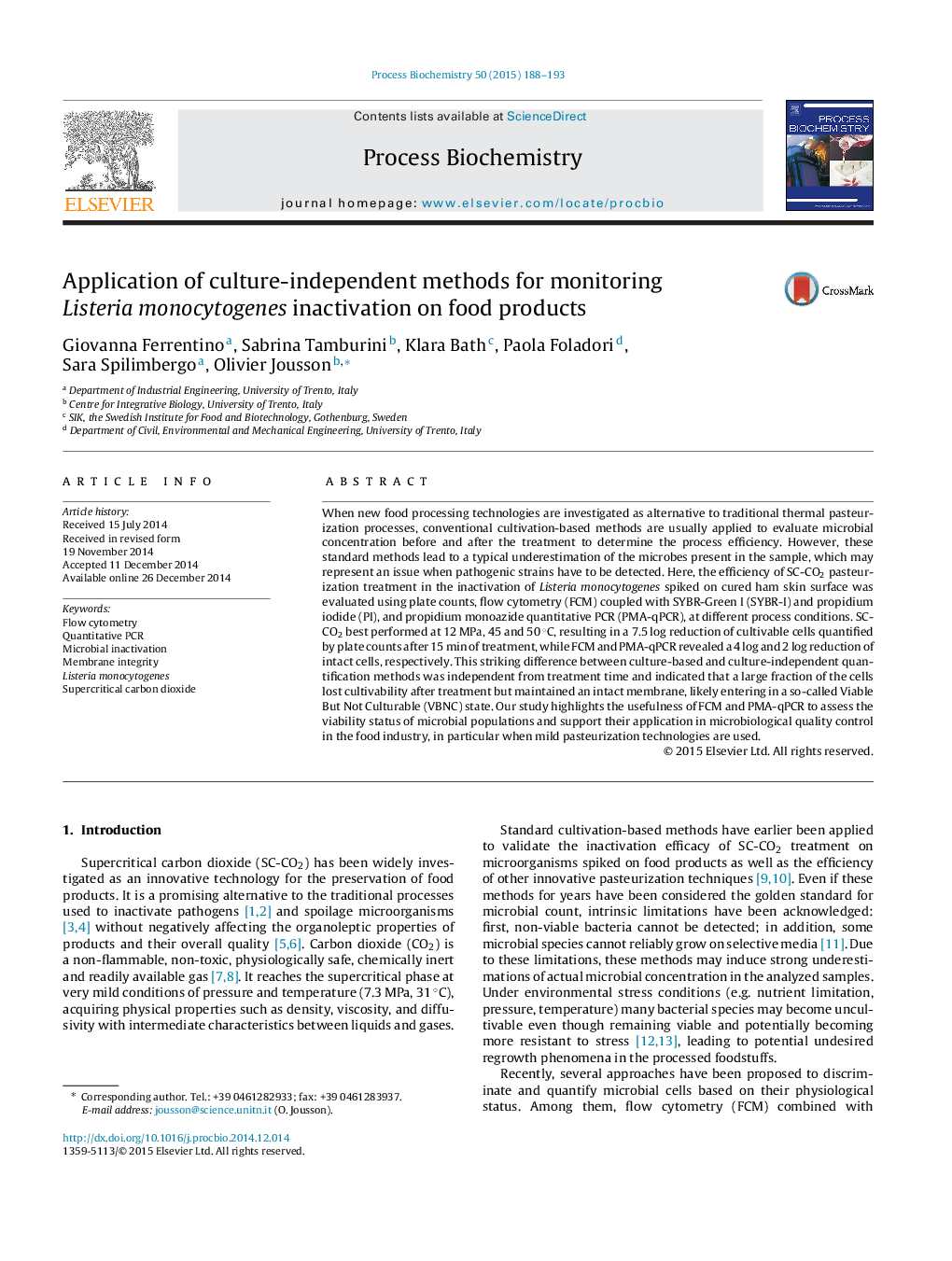| Article ID | Journal | Published Year | Pages | File Type |
|---|---|---|---|---|
| 34390 | Process Biochemistry | 2015 | 6 Pages |
•SC-CO2 treatment efficiently inactivates Listeria monocytogenes on dry cured ham.•Outcome of culture-based vs. culture-independent bacterial quantification techniques differ by up to 4 log Listeria inactivation.•102Listeria cells/g enter a viable but nonculturable state after treatment.
When new food processing technologies are investigated as alternative to traditional thermal pasteurization processes, conventional cultivation-based methods are usually applied to evaluate microbial concentration before and after the treatment to determine the process efficiency. However, these standard methods lead to a typical underestimation of the microbes present in the sample, which may represent an issue when pathogenic strains have to be detected. Here, the efficiency of SC-CO2 pasteurization treatment in the inactivation of Listeria monocytogenes spiked on cured ham skin surface was evaluated using plate counts, flow cytometry (FCM) coupled with SYBR-Green I (SYBR-I) and propidium iodide (PI), and propidium monoazide quantitative PCR (PMA-qPCR), at different process conditions. SC-CO2 best performed at 12 MPa, 45 and 50 °C, resulting in a 7.5 log reduction of cultivable cells quantified by plate counts after 15 min of treatment, while FCM and PMA-qPCR revealed a 4 log and 2 log reduction of intact cells, respectively. This striking difference between culture-based and culture-independent quantification methods was independent from treatment time and indicated that a large fraction of the cells lost cultivability after treatment but maintained an intact membrane, likely entering in a so-called Viable But Not Culturable (VBNC) state. Our study highlights the usefulness of FCM and PMA-qPCR to assess the viability status of microbial populations and support their application in microbiological quality control in the food industry, in particular when mild pasteurization technologies are used.
Graphical abstractFigure optionsDownload full-size imageDownload as PowerPoint slide
